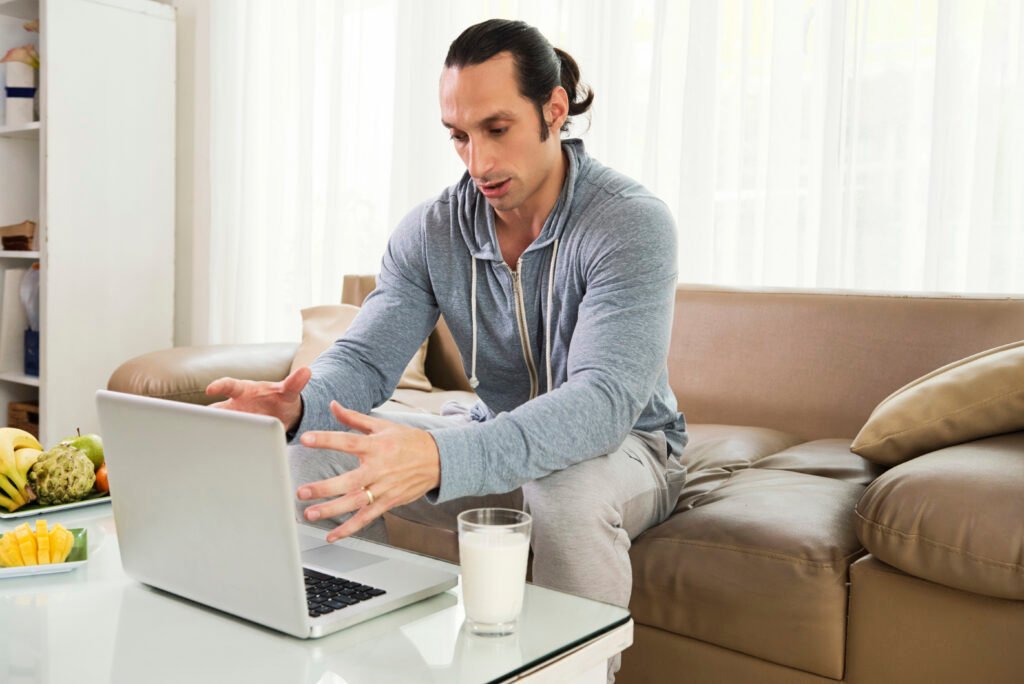How to Speed Up a Slow Laptop: A slow laptop can be incredibly frustrating, especially when you’re trying to work, study, or simply browse the web. Over time, laptops tend to accumulate unnecessary files, outdated software, and other issues that can significantly reduce their performance. The good news is that you don’t need to be a tech expert to speed up your laptop. In this article, we’ll explore practical and effective ways to boost your laptop’s speed from the comfort of your home. Whether you’re using a Windows or Mac laptop, these tips will help you breathe new life into your device.
Table of Contents
1. Why Does a Laptop Slow Down?
Before diving into the solutions, it’s important to understand why laptops slow down over time. Here are some common reasons:
- Too Many Background Programs: Running multiple applications simultaneously can drain your laptop’s resources.
- Outdated Software: Old operating systems or drivers can cause compatibility issues and slow performance.

- Low Storage Space: A nearly full hard drive can hinder your laptop’s ability to function efficiently.
- Malware or Viruses: Malicious software can consume system resources and slow down your laptop.
- Fragmented Hard Drive: Over time, files on a traditional hard drive can become fragmented, making it harder for the system to access them quickly.
- Overheating: Dust buildup or poor ventilation can cause your laptop to overheat, leading to throttled performance.
2. How to Speed Up a Slow Laptop
Now that we know the common causes, let’s explore step-by-step solutions to speed up your laptop.
2.1. Clean Up Your Hard Drive
A cluttered hard drive is one of the most common reasons for a slow laptop. Here’s how to free up space:
Delete Unnecessary Files
- Go through your files and delete anything you no longer need, such as old documents, downloads, or duplicate files.
- Use the Disk Cleanup tool on Windows or the Storage Management tool on Mac to remove temporary files and system cache.
Uninstall Unused Programs
- Open the Control Panel on Windows or the Applications Folder on Mac and uninstall programs you no longer use.
- Be cautious not to remove essential system applications.
Move Files to External Storage
- Transfer large files like videos, photos, or backups to an external hard drive or cloud storage.

2.2. Upgrade to an SSD (Solid State Drive)
If your laptop still uses a traditional hard drive (HDD), upgrading to an SSD can make a massive difference in speed, and this is the best solution. SSDs are faster, more reliable, and consume less power.
How to Upgrade
- Purchase an SSD compatible with your laptop.
- Clone your existing hard drive to the SSD or perform a fresh installation of your operating system.
- Replace the old hard drive with the new SSD (or use both if your laptop supports it).
2.3. Increase RAM
Random Access Memory (RAM) is crucial for multitasking and running memory-intensive applications. If your laptop has less than 8GB of RAM, consider upgrading.
How to Upgrade RAM
- Check your laptop’s specifications to determine the type and maximum amount of RAM it supports.
- Purchase compatible RAM sticks and install them yourself or seek professional help.
2.4. Optimize Startup Programs
Too many programs launching at startup can slow down your laptop’s boot time. Here’s how to manage them:
On Windows
- Press Ctrl + Shift + Esc to open Task Manager.
- Go to the Startup tab and disable unnecessary programs.
On Mac
- Go to System Preferences > Users & Groups > Login Items.
- Remove programs you don’t need at startup.
2.5. Update Your Operating System and Drivers
Outdated software can cause performance issues. Ensure your operating system and drivers are up to date.
On Windows
- Go to Settings > Update & Security > Windows Update and check for updates.
- Update drivers through Device Manager or your laptop manufacturer’s website.
On Mac
- Go to System Preferences > Software Update to install the latest macOS updates.
2.6. Scan for Malware and Viruses
Malware can significantly slow down your laptop. Use reliable antivirus software to scan and remove any threats.
Recommended Tools
- Windows: Windows Defender (built-in) or third-party tools like Malwarebytes.
- Mac: Malwarebytes for Mac or Avast Security.
2.7. Defragment Your Hard Drive (Windows Only)
If you’re using a traditional hard drive, defragmenting can improve performance by organizing fragmented files.
How to Defragment
- Open the Disk Defragmenter tool on Windows.
- Select your hard drive and click Optimize.
2.8. Adjust Power Settings
Your laptop’s power settings can impact its performance. Here’s how to optimize them:
On Windows
- Go to Control Panel > Power Options.
- Select the High Performance power plan.
On Mac
- Go to System Preferences > Energy Saver.
- Adjust settings for better performance.
2.9. Clean Your Laptop’s Hardware
Dust and debris can clog your laptop’s vents, causing overheating and reduced performance.
How to Clean
- Turn off your laptop and unplug it.
- Use a can of compressed air to blow dust out of the vents and keyboard.
- Avoid using liquids or abrasive materials.
2.10. Reset or Reinstall Your Operating System
If your laptop is still slow after trying the above steps, consider resetting or reinstalling your operating system. This will remove all files and applications, giving you a fresh start.
On Windows
- Go to Settings > Update & Security > Recovery and choose Reset this PC.
On Mac
- Restart your Mac and hold Command + R to enter Recovery Mode.
- Select Reinstall macOS.
3. Preventive Measures to Keep Your Laptop Fast
Once you’ve sped up your laptop, follow these tips to maintain its performance:
- Regularly Clean Up Files: Delete unnecessary files and programs periodically.
- Keep Software Updated: Install updates for your operating system and applications.
- Use Antivirus Software: Regularly scan for malware and viruses.
- Avoid Overheating: Use your laptop on a hard, flat surface to ensure proper ventilation.
- Backup Your Data: Regularly back up important files to avoid data loss during maintenance.
4. When to Consider Replacing Your Laptop
If your laptop is more than 5–7 years old and still slow after trying all the above steps, it might be time to consider a replacement. Newer laptops come with faster processors, more RAM, and better storage options, ensuring a smoother experience.
5. Conclusion
A slow laptop doesn’t have to be a permanent problem. By following the steps outlined in this guide, you can significantly improve your laptop’s performance and extend its lifespan. From cleaning up your hard drive to upgrading hardware components, these solutions are easy to implement and don’t require advanced technical skills. Remember, regular maintenance is key to keeping your laptop running smoothly. Therefore, take action and provide your laptop with the necessary support it needs!
References
https://www.hp.com/us-en/shop/tech-takes/why-is-my-laptop-so-slow-and-how-can-i-fix-it


1 thought on “How to Speed Up a Slow Laptop at Home: A Comprehensive Guide”